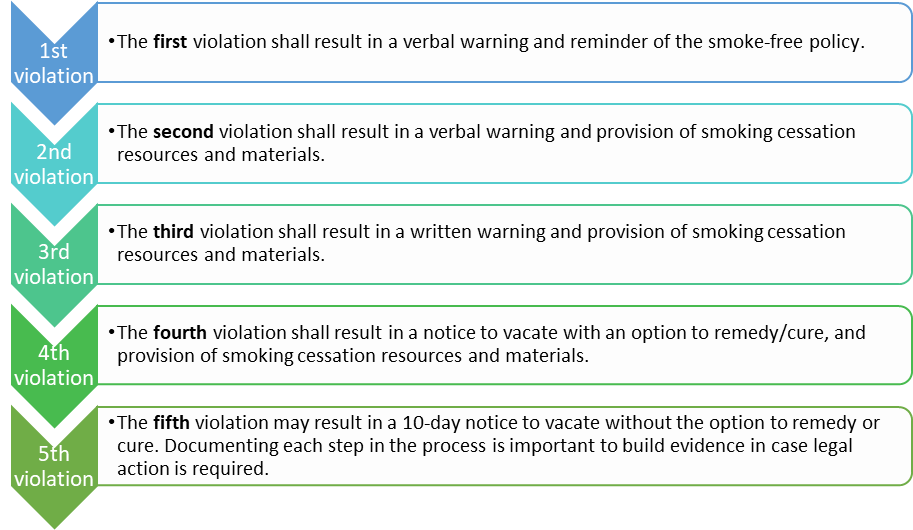Tips and resources to support better compliance with a smoke-free policy.
Compliance and Enforcement Infographic: How to keep your property smoke-free

Graduated Enforcement
Graduated enforcement for smoke-free multi-unit housing attempts to achieve two goals:
1) Protecting residents from secondhand smoke
2) Protecting housing stability for all residents.
A graduated enforcement structure helps to ensure better compliance with a smoke-free policy by providing multiple steps for enforcement and providing the opportunity for residents to change their behavior before infractions rise to the level of lease termination.
Example graduated enforcement process:

The above model language was created by the Public Health Law Center at Mitchell Hamline School of Law in Minnesota. It can be adapted or included in a comprehensive smoke-free lease or lease addendum. The model provides two verbal warnings, a written warning, a notice to vacate with the opportunity to remedy the situation before resulting in the final consequence of a lease termination.
Resource:
Compliance Language
It is also important to include language detailing what actually counts as a violation. Is it just witnessing a resident or guest smoking in a prohibited area? Staff noticing smoking-related damage to the interior unit like burns tobacco residue? Repeated reports of violations of the policy by others? Residents and staff need to know the answer to these questions so they can better comply and enforce the policy.
Resources:
Compliance tips and language from Live Smoke Free (MN)
If interested in learning more about how to adopt and implement a smoke-free policy, please visit our “How” page for more information and resources.
